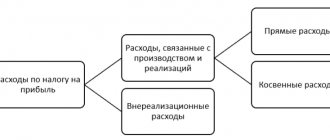Let's look at the basic concepts used by both parties, as well as accountants:
- A loan obligation or loan assumes that the investor (lender) gives the borrower a certain amount of money or impersonal items in a certain quantity, and the borrower assumes responsibility for returning it by a certain date.
A repayable loan means that the borrower must pay interest for using it.
The concluded agreement will be called compensated even if the amount of interest is not specified in it. Then the borrower will be obliged to repay them in accordance with the Central Bank refinancing rate, which is relevant on the day the loan is repaid.
- An interest-free loan takes place if the parties include in the agreement a condition that the borrower has no obligation to pay interest.
Classification of loans in accounting is made depending on:
- types of loans (cash, in kind);
- forms of retribution (interest, interest-free);
- whether the counterparty is an individual or legal entity;
- terms (short-term, long-term).
Why calculate interest on a loan?
In essence, interest on a loan is a fee for using borrowed funds. Calculating the interest on a loan will help you plan your repayment in advance. If you immediately see the amount of overpayment that you will need to repay, you will be able to assess your strengths and determine whether you should take out a loan in such a situation. If the amount to be returned turns out to be too large, then you should refuse such an offer.
A preliminary calculation of the loan is also necessary for the lender. This way he will determine how much he will ultimately receive from the borrower. The lender will compare the amount received with the client’s approximate income - if it turns out to be too large, he may change the terms or refuse the loan.
You can take out a loan in favor of another person
Article 807 of the Civil Code of the Russian Federation presented a real gift to those who are ready to take out a loan in their own name, but transfer it to a third party. The one who came up with such an innovation was clearly most worried about new fraudulent schemes, when the borrower who signed the agreement agrees to the condition of issuing money to a third party and is voluntarily ready to pay for it. Yes, now it’s possible, because it’s legal.
Why this is needed in everyday life is difficult to answer, but from now on any papers need to be studied three times more carefully, so as not to take out a loan in your name in favor of a “charitable organization”, but in reality - giving it to the enterprising followers of Ostap Bender.
How is interest calculated on a loan?
When calculating interest on a loan, four indicators play a major role:
- Loan amount (body)
- Interest rate
- Loan term
- Frequency of payments
All these conditions, as well as the procedure for calculating interest, must be specified in the loan agreement. The procedure for calculating interest is regulated by Article 809 of the Civil Code.
Interest on the loan, unless otherwise specified in the agreement, must be accrued on the loan amount for the entire period of its actual use. Moreover, they are calculated based on the number of payments. If the debt is repaid in one amount at the end of the term, then the overpayment is considered at the end of this period.
If the debt is repaid in installments - for example, weekly or monthly payments - then interest is calculated on the date of payment on the balance of the debt. Interest is calculated by calendar days, so it is necessary to take into account the number of days in the year (365 or 366) and in the month (31, 30, 28 or 29)
If the frequency of payments is not specified in the agreement, then, according to paragraph 2 of Article 809 of the Civil Code of the Russian Federation, interest is accrued monthly until the date of repayment of the debt.
.
The form of interest payment depends on the form in which the loan was issued. Cash loans can only be repaid in cash, cash or non-cash, while property loans can be repaid in property. Article 810 of the Civil Code establishes: the loan is considered repaid at the moment of transfer of the entire amount of the debt, including interest, to the lender.
Unlike a loan, a loan can be interest-free. In this case, the borrower will have to return to the lender exactly the amount that he received from him. For a loan to be considered interest-free, the corresponding condition must be specified in the contract.
Over 10 thousand rubles - only by agreement
There is an important change in Article 808 of the Civil Code of the Russian Federation - now all loans over 10,000 rubles must be formalized by an agreement, while a receipt may either be such or raise more questions than provide answers. A receipt is identical to an agreement only if the essence of the agreement is clearly discerned from it.
If the receipt, for example, only indicates the receipt of money, but does not specify the interest and the period for their repayment, the lender will have to spend a long time running through the courts and actively communicating with lawyers. If you give a loan, and even at interest, be sure to draw up an agreement!
And between legal entities it is possible to conclude a loan agreement only in writing.
How to calculate interest using a calculator?
The easiest way to calculate loan interest is to use an online calculator. This service will allow you to quickly determine the overpayment, regardless of where and how the loan was issued. It can be used both for microloans at the IFC and MCC, and for loans issued from other people and organizations.
To calculate loan overpayments in the calculator you must indicate:
- Duration – in days or as a calendar period
- Loan amount
- Interest rate
- If there are overdue payments - the amount of the penalty and the duration of the delay
- Debt repayment procedure
Based on the data received, the calculator will determine the amount of overpayment and the total amount to be returned, taking into account interest and late fees. For a long-term loan, he can also draw up a debt repayment schedule, which will separately describe each payment.
The documents on the basis of which the loan is issued are:
- loan agreement;
- payment order to transfer the loan amount to the borrower, if the loan was issued from a current account;
- cash documents if the loan was issued in cash.
The receipt of interest, as well as the return of the loan amount, to the current account is reflected on the basis of bank statements for the current account and copies of payment orders with which the borrower transferred the amount of interest to the organization's account and repaid the loan.
If the borrower pays the amount of interest and also returns the loan in cash to the organization’s cash desk, then these actions are formalized in accordance with the rules for conducting cash transactions.
Previously, when issuing funds from the cash register, the cashier had to issue a cash receipt order in Form N KO-2. Documents for the issuance of money must be signed by the manager, chief accountant of the enterprise or persons authorized to do so (clause 4.2 of Regulations N 373-P). An expense cash order must be reflected in the cash book (Form N KO-4) (clause 5.2. Regulations N 373-P), as well as in the journal for registering receipt and expense orders (Form N KO-3). But from January 1, 2013 The forms of primary accounting documents contained in the albums of unified forms of primary accounting documentation are not mandatory for use. Therefore, the organization can develop all the necessary forms for work independently, the main thing is that they meet the requirements established by Article 9 of the Federal Law of December 6, 2011. N 402-FZ “On Accounting”. However, in our opinion, these document forms are very convenient to use, so we consider it advisable to recommend them for use at the present time.
Funds transferred to the borrower under the loan agreement, as well as those returned by the borrower, are not recognized in the lender’s accounting as expenses and income of the organization (clause 2 of PBU 10/99 “Expenses of the organization”, clause 3 of PBU “Income of the organization”) and are taken into account as financial investments (interest-bearing only) (clause 3 of PBU 19/02 “Accounting for financial investments”).
How to calculate interest yourself?
To independently calculate how much interest you will need to pay, you need to know:
- Amount of loan provided
- Amount and type of interest rate (daily, monthly or annual)
- Period for which interest is calculated
- Availability and amount of additional payments
The formula for calculating interest under a loan agreement depends on the method of calculating interest:
- Most loans use a simple formula. For calculations you will need the loan amount, the interest rate multiplied by the number of days in the year, and the number of days the money is used
- A complex formula is used for growing (capitalized) interest. To calculate them, you need to multiply the initial amount by (1+r)n, where r is the rate converted into a decimal fraction, and n is the number of payment periods.
It is more difficult to calculate interest on a loan than on a loan due to differences in the method and procedure for calculation. Here you will learn how to do it correctly.
How is simple interest calculated?
Payments for most loans are calculated using this formula:
Interest = Loan size × Annual rate / Number of days in a year × Payment period size
Let's look at calculating interest on a loan using this formula using several examples.
Example 1
Igor Ivanov takes out a loan of 25,000 rubles for 20 days. The rate is 1.5% per day. There are 365 days in a year.
First you need to calculate the annual rate - to do this, the daily rate is multiplied by the number of days in the year:
1,5 × 365 = 547,5
This means the annual rate is 547.5%. Next, let's calculate the percentages:
\(\frac{25000 \times 547.5 }{365}\times 20=\frac{136875}{365}\times 20=375\times 20=7500\) rubles - the amount of interest for the entire period
Thus, Ivanov must pay only 32,500 rubles in total.
If the contract does not specify the rate, then the refinancing rate is used to calculate interest. This is required by Article 809 of the Civil Code of the Russian Federation. The size of this rate is set by the Central Bank of the Russian Federation. From March 26, 2021, the refinancing rate is 7.25% per annum.
Example 2
Lyubov Petrova takes out a loan of 20,000 rubles for 15 days. There are 366 days in a year. The rate is not specified in the contract.
In this case, the formula does not change, but the refinancing rate is used for calculation:
20 000 × 9,75% = 1 950 1 950 / 366 = 5,33 5.33 × 15 = 79,95
This means that Petrova must pay only 20,079.95 rubles in total.
Personal income tax on a loan to an employee
If an organization has issued an interest-free loan to an employee or the interest rate in the agreement is set to less than 2/3 of the refinancing rate, then the employee receives material benefits from saving on interest. The organization is obliged to withhold and transfer personal income tax to the budget. The tax rate for material benefits is:
- 35% - for residents;
- 30% - for non-residents.
The calculation of material benefits and personal income tax on it must be made on the last day of each month for the entire duration of the lender’s use of borrowed funds. The refinancing rate is also taken into account, effective on the calculation date. From January 1, 2016, the refinancing rate is recognized as equal to the key rate. The indicator changes quite often. Changes must be monitored. So, in 2021, its meaning has already been revised twice.
| Start date | Refinancing rate |
| 18.12.2017 | 7,75 |
| 12.02.2018 | 7,5 |
| 26.03.2018 | 7,25 |
The amount of personal income tax for material benefits for resident employees is determined as follows:
The organization will be able to withhold personal income tax from the employee to whom the borrowed money is issued at the next payment of wages. Personal income tax must be transferred to the budget no later than the next day after the deduction.
Questions and answers
From what time does interest begin to accrue?
The loan agreement, unless otherwise stated in it, is considered real - it comes into force after the amount is transferred to the borrower. Interest on it is accrued from the day following the day of issue until the day of repayment inclusive - this is established by clause 3.14 of the Central Bank Regulations No. 236-P dated August 4, 2003.
Is loan interest subject to VAT?
No, interest on loans is a type of payment that is not subject to VAT. This is established by paragraph 3 of Article 149 of the Tax Code.
Is it possible to suspend the accrual of interest on a loan?
Yes, the loan agreement may provide for a deferment for repayment of the entire debt or for part of it - principal or interest. To obtain it, you usually need to meet certain conditions. The availability of deferred payments and the procedure for its provision, as well as other conditions, must be specified in the contract.
Which loans are always interest-free?
The loan will be considered interest-free by default if:
- It is issued between two individuals for an amount of up to 5,000 rubles and without an agreement
- It is issued in property form
In all other cases, the interest-free condition must be specified in the contract. Otherwise, the loan will be considered issued at interest at the refinancing rate (unless otherwise specified).
Which method of calculating interest is better?
It all depends on its conditions and the characteristics of the borrower. If the amount you need is small, then it is worth taking out a loan with repayment in one payment at the end of the term. It is better to take out large loans for a long period with repayment in installments. Choose the payment schedule that is most comfortable for you - once a month, once a week or once every two weeks.
Legal basis
The issuance of borrowed funds by an organization to employees is not an employment relationship, but a civil law one.
The procedure for the relationship between the lender and the borrower is regulated by Chapter 42 of the Civil Code of the Russian Federation. When issuing loans to employees of an organization, it is necessary to conclude a written agreement (Article 808 of the Civil Code of the Russian Federation). It must stipulate the main terms of the transaction:
- sum,
- refund period,
- interest rate for using money
If one of the conditions is not specified, the contract may be declared invalid.
Sample loan agreement with an employee
Article 809 of the Civil Code of the Russian Federation does not prohibit the conclusion of an interest-free loan agreement. Consequently, the organization has the right not to collect interest from the employee for the use of the funds provided. But this condition must be written down in the contract. If the condition is not specified, then in accordance with paragraph 1 of Art. 809 of the Civil Code of the Russian Federation, the amount of interest will be determined by the key rate of the Bank of Russia.
Income tax
If the terms of the agreement provide for the payment of interest for the employee’s use of funds, then income in the form of interest is subject to inclusion in the tax base for income tax as non-operating income.
For the purpose of calculating profit tax, non-operating income of an organization is income in the form of interest received under loan agreements, credit agreements, bank accounts, bank deposits, as well as on securities and other debt obligations (clause 6 of Article 250 of the Tax Code of the Russian Federation).
AUDIT OF FINANCIAL STATEMENTS
Important!
The procedure for recognizing income using the accrual method is regulated by clause 1 of Art. 271 of the Tax Code of the Russian Federation, according to which income is recognized in the reporting (tax) period in which it occurred, regardless of the actual receipt of funds, other property (work, services) and (or) property rights (accrual method).
Under loan agreements and other similar agreements, the validity of which falls on more than one reporting period, income is recognized as received and is included in the said income at the end of the corresponding reporting period (clause 6 of Article 271 of the Tax Code of the Russian Federation).
Thus, a taxpayer who determines income using the accrual method determines the amount of income received or to be received in the reporting period in the form of interest in accordance with the terms of the agreement, based on the yield established for each type of debt obligation and the validity period of such debt obligation in the reporting period .
In conclusion, we will say that if the activity of providing loans to individuals is the main activity for the organization, then the income received and the expenses incurred will be income and expenses from ordinary activities.
The accounting will look like this:
| Debit 76 | Credit 50 (51) | reflects the issuance of a loan to an individual from the organization's current account |
| Debit 50 (51) | Credit 76 | the loan repayment is reflected in accordance with the terms of the agreement |
If a loan is issued to an employee of an organization, then instead of account 76 “Settlements with various debtors and creditors”, account 73 “Settlements with personnel for other operations” is used, subaccount 73-1 “Settlements for loans provided”.





